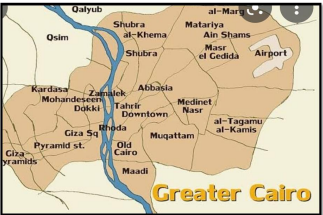Articles

Submission to VIJ 2024-05-02
Keywords
- Physical losses, Commercial losses, The billed metered consumption, The billed unmetered consumption, Unbilled authorized metered consumption, Unbilled authorized unmetered consumption, Unauthorized consumption, Non –revenue water, Infrastructure leakage index, Pressure management (PM), Active leakage control (ALC).
Copyright (c) 2024 Aida Basuni, Sayed I. Ali, Mohammed Hassan, Hoda Soussa, Farag Samhan

This work is licensed under a Creative Commons Attribution 4.0 International License.
References
- Analysis of the Drivers of Non-Revenue Water Loss: The Case of Nigeri By Charles O. Njelita -- A Dissertation Presented in Partial Fulfillment of the Requirements for the Degree of Doctor of Philosophy in Business Analytics and Decision Sciences CAPITOL TECHNOLOGY UNIVERSITY) April 11,2019(
- The Issues and Challenges of Reducing Non-Revenue Water (ADB 2012).
- the JIS (Japan Industrial Standards).
- Water Utility Asset Management (A Guide for Development Practitioners) (ADB 2013).
- Management of Water Losses in Water Supply and Distribution Networks in Turkey: 15.01.2018.
- The Need for Awareness of Drinking Water Loss Reduction for Sustainable Water Resource Management in Rwanda, October 23, 2016.
- International Water Association (IWA). 2012. Water Audit Method. American Water Works Association. America.
- World Bank Institute (WBI) Guidelines.
- Kingdom, B.; Liemberger, R.; Marin, P. The Challenge of Reducing Non-Revenue Water (NRW) in Developing Countries—How the Private Sector Can Help: A Look at Performance-Based Service Contracting; Water Supply and Sanitation Board Discussion Paper Series; Paper no. 8; The World Bank: Washington, DC, USA, 2006;
- Mutikanga, H.E. Water Loss Management: Tools and Methods for Developing Countries. Ph.D. Thesis, Delft University of Technology, Delft, The Netherlands, 4 June 2012.
- ]Lee, C.; Lam, J.S.L. Managing reverse logistics to enhance sustainability of industrial marketing. Ind. Mark. Manag. 2012, 41, 589–598.
- Jin, H.; Piratla, K.R. A resilience-based prioritization scheme for water main rehabilitation. J. Water Supply Res. Technol. 2016, 65, 307–321.
- Ashton, C.H.; Hope, V.S. Environmental valuation and the economic level of leakage. Urban Water 2001, 3, 261–270. [
- Nazif, S.; Karamouz, M.; Tabesh, M.; Moridi, A. Pressure Management Model for Urban Water Distribution Networks. Water Resour. Manag. 2010, 24, 437–458.